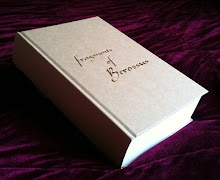The star-myths counterpoint the narrative — they are entirely independent of the story (indeed they can be read in complete isolation) but they shape the perceptions of the chapters to either side, and the book as a whole.
The myths were carefully researched, selected and interpolated over a period of approximately two years at the British Library and other national & state libraries (Library of Congress; National Library of New Zealand; State Library of Victoria, Australia), but by the time I was ready to re-check my facts the internet had become a significant research resource in its own right and I was able to review many texts online.
Certain poetic licence has been taken with the stories — all the stories had to be encapsulated in approximately five hundred words — but I strove, where possible, to be faithful to the originals. In many cases however, the same story appeared in several sources that disagreed on certain details — then I was obliged either to prefer one source over another or to create a synthesis.
In at least one case the source was incomplete or corrupt at a crucial juncture, and I therefore interpolated poetically — with some assistance from my burgeoning appreciation of the greater corpus of mythological traditions as a whole.
The geographical or cultural origins of the genuinely mythological fourteen star-myths are as follows:
| Betelgeuse | South America | ||
| Canopus | India | ||
| Gomeisa | Ancient Egypt | ||
| Rigil Kentaurus | Australia | ||
| Polaris | Scandinavia | ||
| Capella | Africa | ||
| Alcor | Meso-america | ||
| Antares | North America | ||
| Achernar | Ancient Greece | ||
| Al Na’ir | New Zealand | ||
| Fomalhaut | Ancient Sumer | ||
| Arcturus | Inuit | ||
| Spica | China | ||
| Altair | Japan/Korea |
Which countries, tribes or other groupings contributed the specifics shouldn't be too hard to work out.
+adjusted+for+blog.jpg)
No comments:
Post a Comment